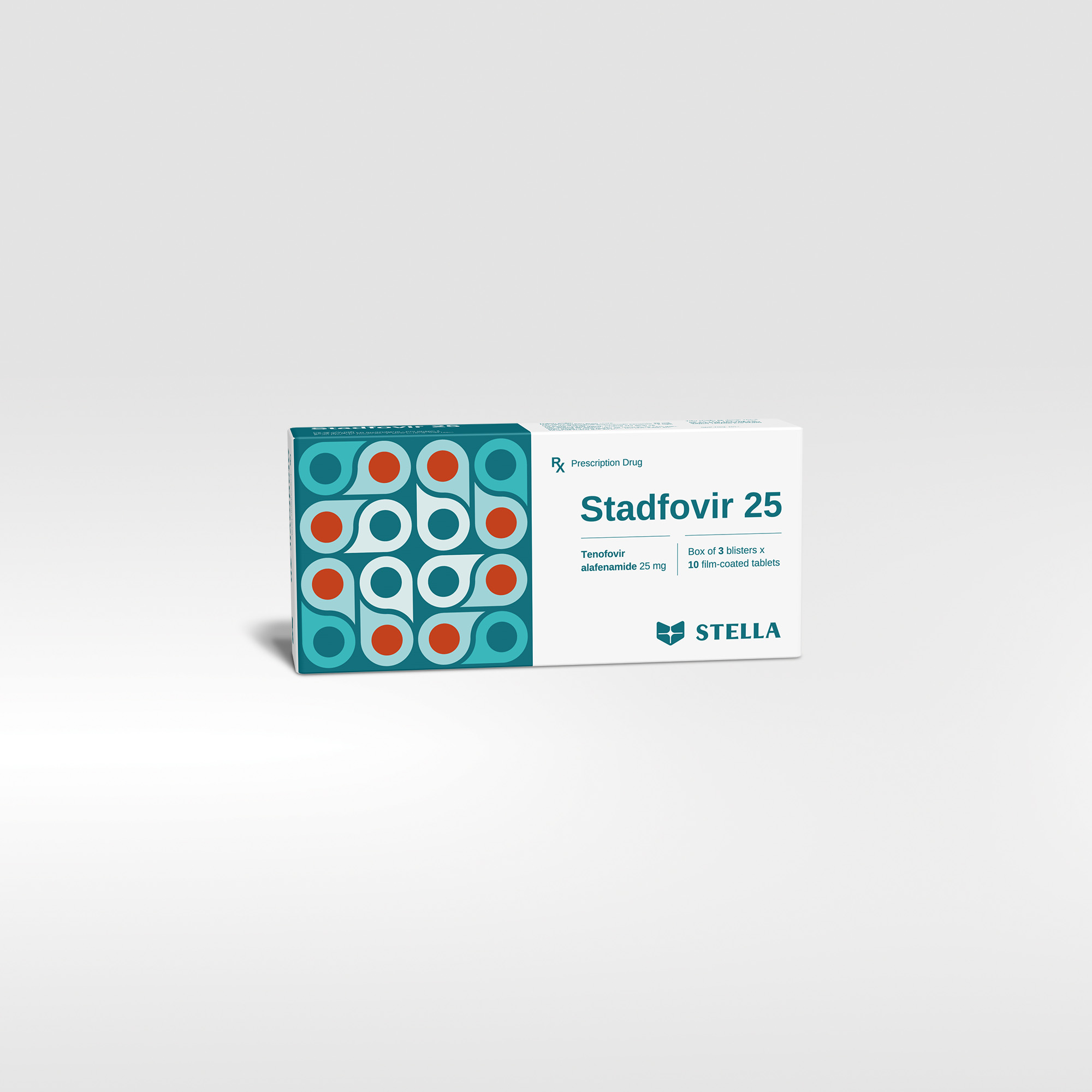Stadfovir 25 Rx
Tenofovir alafenamide is a phosphonamidate prodrug of tenofovir (2′-deoxyadenosine monophosphate analogue). Tenofovir alafenamide enters primary hepatocytes by passive diffusion and by the hepatic uptake transporters OATP1B1 and OATP1B3.
Tenofovir diphosphate is a weak inhibitor of mammalian DNA polymerases that include mitochondrial DNA polymerase gamma and there is no evidence of mitochondrial toxicity in vitro based on several assays including mitochondrial DNA analyses.
| Pack size | Box of 30 tablets |
| Shelf-life | 24 months |
| Composition | Tenofovir alafenamide (as tenofovir alafenamide fumarate) |
| Dosage forms and strengths | Film-coated tablet: 25 mg |
Product code :










